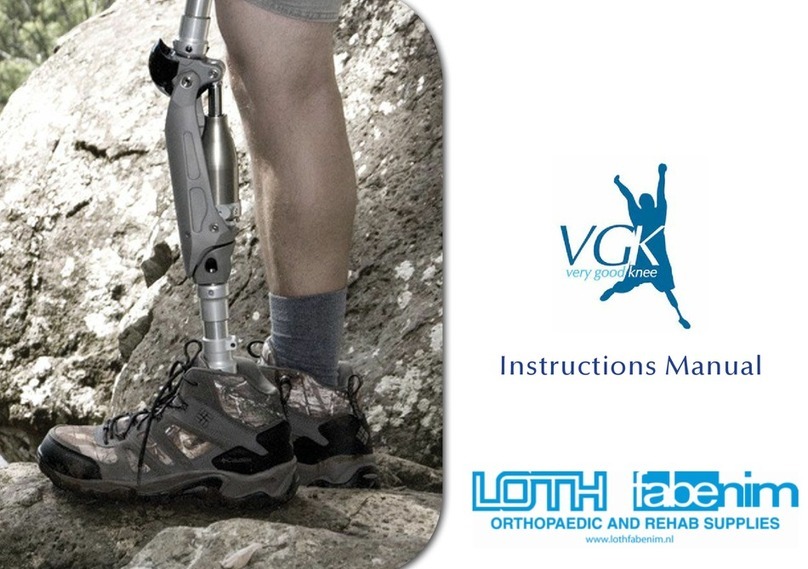
EN
Very Good Knee - Go! GebruiksaanwijzingVersion 2.4.2 3
VGK-Go! van Orthomobility Ltd., distributeur Loth Fabenim B.V.
Contents
1. Introduction ......................................................................................................... 5
1.1. Intended Purpose ................................................................................................. 5
1.2. Technology .......................................................................................................... 5
1.3. Recommended User Prole ........................................................................................... 5
1.4. Installation and Adjustments ......................................................................... 6
1.5. Compatibility ........................................................................................... 6
1.6. Lifetime of the Device .............................................................................................. 6
1.7. Identication of the Device ........................................................................................ 7
1.8. Normal use (note stairs) ............................................................................................ 7
1.9. Contact with Water ...................................................................................... 8
1.10. Expectation Management ................................................................................................ 8
1.11. Irregular and Extreme Use ........................................................................................ 8
1.11.1. Extreme Temperature .............................................................................................. 9
1.11.2. Extreme Device Settings ................................................................................ 9
1.12. Body Weight and Additional Load ................................................................................. 9
1.13. Prevention of Overheating ......................................................................................... 9
1.14. Wear and Tear ............................................................................................... 9
1.15. Storage ........................................................................................... 9
2. Alignment ............................................................................................................ 10
2.1. General Alignment ............................................................................................................. 10
2.2. Leg Length ......................................................................................................................... 12
2.3. Socket Flexion .................................................................. 12
2.4. Foot Alignment ......................................................................................................... 12
2.5. Kneeling ............................................................................... 13
3. Controls .......................................................................................................... 14
3.1. Swing release ................................................................................... 15
3.1.1. Setting Swing Release Threshold .......................................................... 15
3.1.2. Conditions for Swing Release ....................................................................... 15
3.2. Stance Flexion Handle ........................................................................................ 16
4. Adjustments .......................................................................................................... 17
4.1. Adjusting the Stairs Mode ............................................................................................. 17
4.2. Ultra High Resistance Mode ........................................................................................... 17
4.3. Adjusting the Cycle Mode ............................................................................................. 17
4.3.1. Bench Testing Cycle Mode ................................................................................... 18
4.3.2. Clinical Set up of Cycle Mode ................................................................... 18
4.4. Swing Phase Adjustments ............................................................................ 19
4.4.1. Maximum Knee Flexion Limitation in Swing ......................................................... 19
4.4.2. Nominal Swing Phase Resistance ..................................................... 19
4.4.3. Terminal Impact Damping ........................................................................................ 20




























